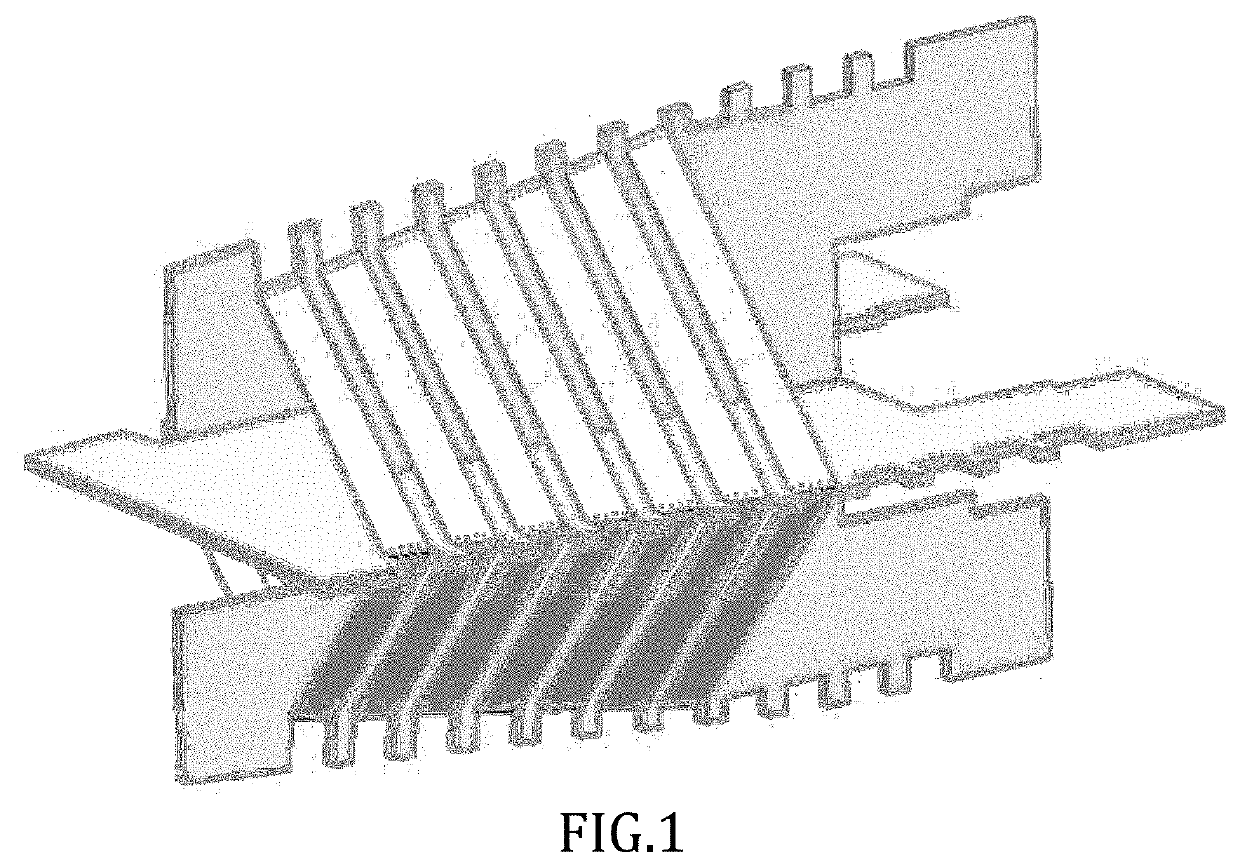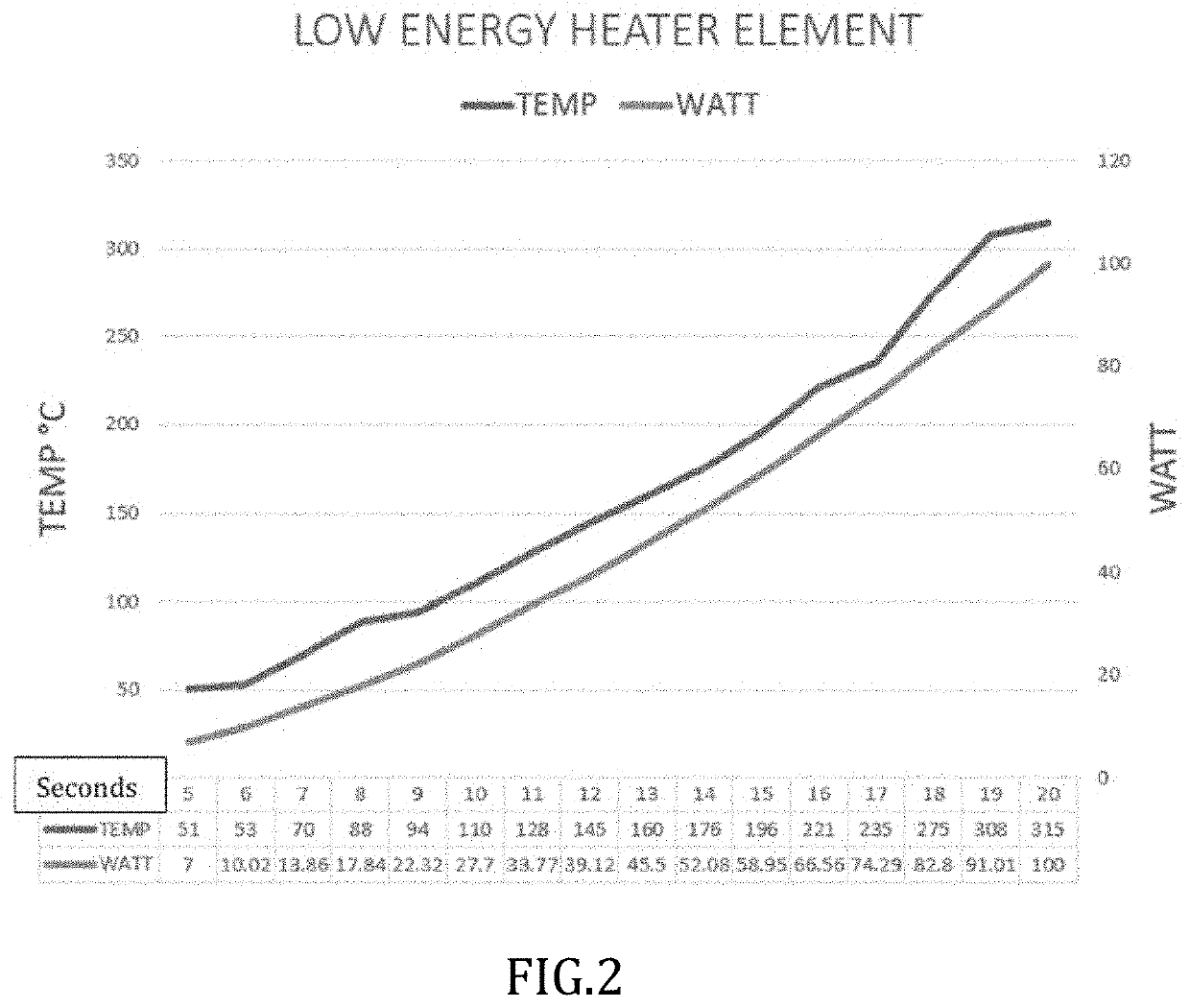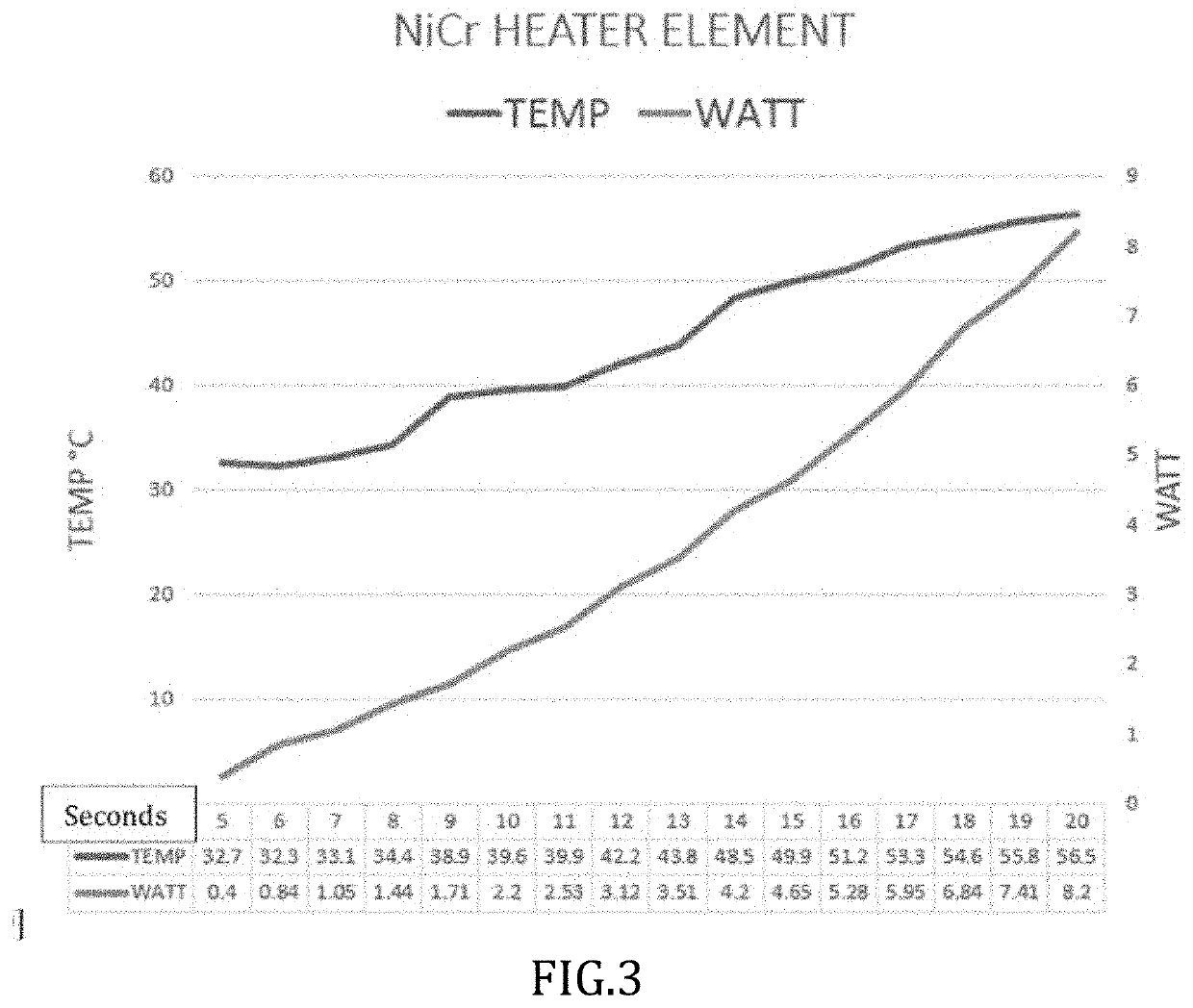Low power high-efficiency heating element
- Summary
- Abstract
- Description
- Claims
- Application Information
AI Technical Summary
Benefits of technology
Problems solved by technology
Method used
Image
Examples
example 1
on of Low Energy Heater Element
[0079]Element: Nickel-Chromium alloy and / or Iron Alloy
a. Coating: Chemical mixture of Graphite and Silica Carbide
b. Width: 4 mm
c. Thickness: 0.4 mm
d. Length: 240 mm
e. Total surface area: 2112 mm2
f. Volt DC: 12V
g. Current: 5 A
h. Resistance: 2Ω
i. Power: 55 W-60 W
j. Temperature@ 60 W: 270° C.
example 2
y Heater Element (Temp=Line Above; Watt=Line Below)
[0080]See FIG. 4 showing temperature and power vs time in seconds for low energy heater element.
Heater Strip Spec
[0081]Total surface area=7946 mm2[0082]Volume=1444.8 mm3[0083]Resistance=3.63Ω[0084]Strip length=903 mm[0085]Strip thickness=0.4 mm[0086]Strip width=4 mm[0087]Input voltage=5V to 20V
example 3
r Heater Element (Temp=Line Above; Watt=Line Below)
[0088]See FIG. 5 showing temperature and power vs time in seconds for NiCr heater element.
NiCr Heater Wire Spec
[0089]Total surface area=2393 mm2[0090]Volume=479 mm3[0091]Resistance=52.4Ω[0092]Strip length=3808 mm[0093]Strip diameter=0.4 mm[0094]Input voltage=5V to 20V
PUM
 Login to View More
Login to View More Abstract
Description
Claims
Application Information
 Login to View More
Login to View More - R&D
- Intellectual Property
- Life Sciences
- Materials
- Tech Scout
- Unparalleled Data Quality
- Higher Quality Content
- 60% Fewer Hallucinations
Browse by: Latest US Patents, China's latest patents, Technical Efficacy Thesaurus, Application Domain, Technology Topic, Popular Technical Reports.
© 2025 PatSnap. All rights reserved.Legal|Privacy policy|Modern Slavery Act Transparency Statement|Sitemap|About US| Contact US: help@patsnap.com



